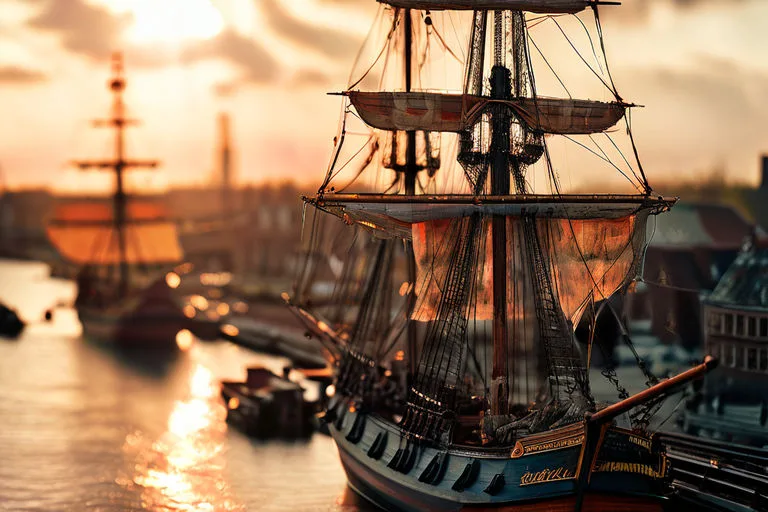The story of the Dutch Colony of New Netherland is a fascinating chapter in the early history of North America, marked by exploration, trade, and cultural exchange. Founded in the early 17th century, this colony laid the groundwork for modern-day New York City and contributed significantly to the region’s development.
Origins of New Netherland
New Netherland was established by the Dutch West India Company in 1624 as a means to capitalize on the lucrative fur trade. The colony stretched from the Delmarva Peninsula to the southern tip of Cape Cod, encompassing parts of what are now New York, New Jersey, Delaware, and Connecticut. The main purpose was economic gain, driven by the high demand for beaver pelts in Europe.
The Birth of New Amsterdam
At the heart of New Netherland was New Amsterdam, founded in 1625 on the southern tip of Manhattan Island. This strategic location was chosen for its excellent harbor and access to the Hudson River, facilitating trade with the indigenous populations and other European settlements. New Amsterdam quickly became a bustling port and the administrative center of the colony.
Life in New Netherland and New Amsterdam
The Dutch Colony of New Netherland was a melting pot of cultures. The Dutch encouraged a policy of religious tolerance and welcomed settlers from various backgrounds, including Jews, Huguenots, and Africans (both enslaved and free). This diversity contributed to the colony’s vibrant and cosmopolitan character.
New Amsterdam was characterized by its narrow, winding streets and a mix of residential, commercial, and industrial buildings. The settlement had a distinctly Dutch architectural style, with gabled roofs and brick facades. The colony’s economy was based on trade, agriculture, and, to a lesser extent, manufacturing.

Governance and Conflict
The governance of New Netherland was overseen by the Dutch West India Company, which appointed a series of directors to manage the colony. One of the most notable directors was Peter Stuyvesant, who served from 1647 until the English takeover in 1664. Stuyvesant’s authoritarian rule was marked by efforts to improve the colony’s defenses and infrastructure.
However, New Netherland faced constant threats from rival European powers, particularly the English. Tensions culminated in 1664 when an English fleet sailed into the harbor of New Amsterdam and demanded the surrender of the colony. Lacking sufficient military defenses and support from the Dutch government, Stuyvesant reluctantly surrendered, and New Netherland was renamed New York, in honor of the Duke of York.
Legacy of the Dutch Colony
Despite its relatively short existence, the Dutch Colony of New Netherland left a lasting legacy. The principles of religious tolerance and cultural diversity continued to shape the character of New York City. The Dutch influence is still evident in place names (such as Brooklyn, Harlem, and Wall Street) and architectural styles.
The early Dutch settlers’ contributions to commerce, law, and urban planning laid the foundation for one of the world’s most influential cities. The story of New Netherland and New Amsterdam is a testament to the enduring impact of the Dutch in North America and a crucial part of the rich tapestry of American history.
Conclusion
The Dutch Colony of New Netherland and its capital, New Amsterdam, played a pivotal role in the early history of what would become the United States. From its establishment for economic purposes to its eventual surrender to the English, the colony’s history is filled with lessons on cultural exchange, governance, and resilience. Today, the legacy of New Netherland is visible in the diverse and dynamic spirit of New York City, a living monument to its Dutch roots.
FAQs
What did the Dutch colony of New Netherland or New Amsterdam become?
The Dutch colony of New Netherland, including New Amsterdam, became the English colony of New York after the English seized control in 1664, renaming it in honor of the Duke of York.
What is New Amsterdam called today?
New Amsterdam is called New York City today. The name was changed in 1664 when the English seized control from the Dutch and renamed it in honor of the Duke of York.
What was the name of the Dutch colony in the New World?
The Dutch colony in the New World was called New Netherland. It included areas of present-day New York, New Jersey, Delaware, and Connecticut, with its capital at New Amsterdam (now New York City).
Who founded New Amsterdam?
New Amsterdam was founded by the Dutch West India Company in 1624. Peter Minuit is often credited for his role in the establishment and purchase of Manhattan in 1626.
Why did the Dutch leave the Netherlands?
The Dutch left the Netherlands due to economic hardship, religious persecution, and the allure of opportunities abroad, leading to significant emigration waves in the 19th and 20th centuries.
Source : chatgpt.com
